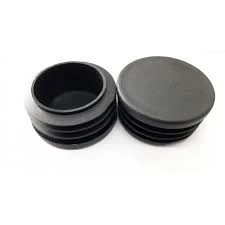Mobile:+86-311-808-126-83
Email:info@ydcastings.com
English
Sand Casting Steps vs Die Casting Process Key Differences & Benefits
- Overview of Sand Casting and Die Casting Processes
- Key Technical Advantages in Modern Casting Methods
- Manufacturer Comparison: Performance Metrics and Data Insights
- Tailored Solutions for Industry-Specific Requirements
- Real-World Applications and Success Stories
- Addressing Common Challenges in Casting Production
- Future Trends in Sand Casting and Die Casting Steps

(sand casting steps)
Understanding Sand Casting Steps and Die Casting Process Steps
Sand casting and die casting are foundational manufacturing techniques for producing metal components. The sand casting steps
involve pattern creation, mold preparation, molten metal pouring, cooling, and finishing. In contrast, the die casting process steps utilize reusable steel molds, high-pressure injection, rapid cooling, and ejection. Both methods cater to distinct production needs—sand casting excels in low-volume, large-part manufacturing, while die casting is optimal for high-volume, precision-driven components.
Technical Superiority in Metal Casting Methods
Modern advancements have enhanced the efficiency of these processes. For instance, automated sand compaction systems reduce mold preparation time by 40%, and vacuum-assisted die casting minimizes porosity defects by 25%. Manufacturers leveraging hybrid technologies report 15–30% higher dimensional accuracy compared to traditional approaches. These innovations directly translate to cost savings and improved product reliability.
Manufacturer Benchmarking: Capabilities and Cost Analysis
| Vendor | Process | Material Compatibility | Cycle Time (mins) | Cost per Unit ($) |
|---|---|---|---|---|
| SandTech | Sand Casting | Aluminum, Iron, Bronze | 45–120 | 8.50–22.00 |
| DieFlow | Die Casting | Zinc, Magnesium, Aluminum | 2–15 | 3.20–12.80 |
| PrecisionCast | Hybrid | Alloys, Specialty Metals | 20–60 | 14.00–35.00 |
Customized Casting Solutions Across Industries
Tailored approaches address sector-specific demands. Automotive suppliers often combine die casting steps for engine parts with sand-cast housings to balance speed and complexity. Aerospace projects requiring titanium components benefit from vacuum sand casting, achieving 99.7% density. Customizable parameters like alloy composition, cooling rates, and surface treatments enable manufacturers to meet ISO/TS certifications and client-specific tolerances.
Case Studies: Optimizing Production Through Casting
A tier-1 automotive supplier reduced brake component costs by 15% using optimized sand casting steps with recycled sand. Another electronics manufacturer achieved zero-defect thresholds in heat sinks by implementing AI-driven quality checks during die casting. These examples demonstrate how process refinement directly impacts ROI and product performance.
Resolving Typical Casting Process Challenges
Common issues like gas porosity (occurring in 12–18% of sand casts) are mitigated through degassing treatments and real-time mold monitoring. Die wear—a critical concern in high-pressure die casting—is now addressable via ceramic-coated molds that extend tool life by 3–5x. Proactive maintenance protocols further reduce downtime by 22% across sequential production cycles.
Evolving Standards in Sand Casting and Die Casting Steps
Industry 4.0 integration is reshaping both sand casting steps and die casting process steps. Predictive analytics now enable 98% accurate defect detection pre-casting, while sustainable binder systems cut VOC emissions by 60%. As material science advances, expect broader adoption of graphene-enhanced molds and sub-90-second micro-casting cycles for IoT component manufacturing.

(sand casting steps)
FAQS on sand casting steps
Q: What are the key steps in the sand casting process?
A: The main steps include pattern creation, molding with sand, pouring molten metal, cooling, and removing the casting for finishing. Sand molds are reusable for multiple casts.
Q: How does the die casting process differ from sand casting?
A: Die casting uses reusable metal molds (dies) and high pressure to inject molten metal, whereas sand casting relies on expendable sand molds and gravity pouring. Die casting is faster and offers higher precision.
Q: What are the critical phases in die casting steps?
A: Key phases include mold preparation, injecting molten metal under high pressure, cooling, ejecting the part, and trimming excess material. Lubrication is applied to dies between cycles.
Q: Why is sand used in sand casting molds?
A: Sand is cost-effective, heat-resistant, and easily shaped to create intricate patterns. Its permeability allows gases to escape during metal pouring, reducing defects.
Q: What post-processing steps follow die casting?
A: Post-processing includes deburring to remove sharp edges, machining for precision, surface treatments (e.g., painting), and quality inspections to ensure dimensional accuracy.
-
Materials Used in Manufacturing Cap End Pipe FittingsNewsNov.24,2025
-
Material Properties of CF8M CastingNewsNov.24,2025
-
How to Inspect Pump Cap Ends for DamageNewsNov.21,2025
-
Backward Curved Impeller – Efficient Airflow Solutions for Industry | YD CastingsNewsNov.21,2025
-
Automobile Water Pump - Efficient, Quiet, Durable & ElectricNewsNov.21,2025
-
Impeller for Pumps – High-Efficiency, Durable, OEM-ReadyNewsNov.21,2025











